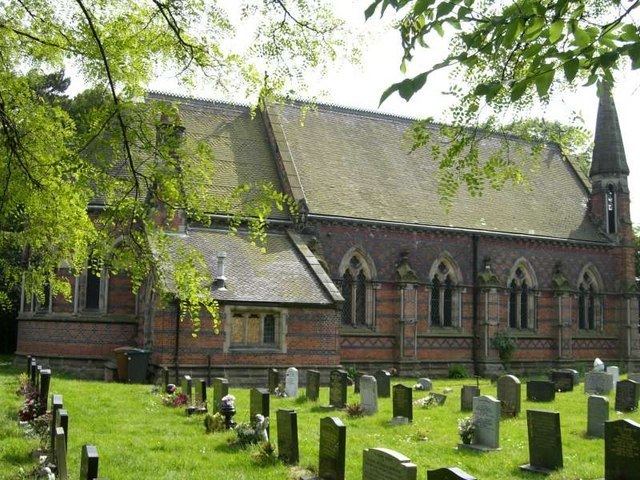OS grid reference SJ 727 554 Country England Opened 1858 Architect George Gilbert Scott | Denomination Anglican Phone +44 1270 582388 | |
 | ||
Dedication St Michael and All Angels Similar All Saints Church - Scholar G, St Mark's Church - Antrobus, St Luke's Church - Lower W, All Saints Church - Harthill, All Saints' Church - Weston Profiles | ||
St Michael and All Angels Church is in the village of Crewe Green, Cheshire, England. The church is recorded in the National Heritage List for England as a designated Grade II* listed building. It is an active Anglican parish church in the diocese of Chester, the archdeaconry of Macclesfield and the deanery of Nantwich. Its benefice is combined with that of St Matthew, Haslington.
Contents
History
The church was built in 1857–58 to a design by Sir George Gilbert Scott for the 3rd Lord Crewe.
Architecture
St Michael's is constructed in red and blue brick, with stone dressings, and is decorated with bands of encaustic tiles. It has a tiled roof. The plan consists of a four-bay nave, with an apsidal chancel, a south porch, a north vestry, and an octagonal turret at the northeast corner of the nave. The church stands on a sandstone plinth, and the walls are decorated with diaper work and blue brick bands. The porch is gabled and in the apex of the gable is an inset panel of Christ blessing. At the west end is a rose window flanked by round panels depicting the Holy Family and angels.
The interior of the church is in white brick with decoration in red brick. The ceiling has beams of dark wood. The reredos contains a fresco of the Last Supper. The pulpit is in stone with dark marble shafts. The font is decorated with the symbols of the Evangelists. The furnishings in the choir are elaborately carved, including poppyheads. The stained glass dates probably from the 1860s, and is probably by Wailes. The scenes at the west end of the church are from the Old Testament, and in the east end are from the New Testament.
